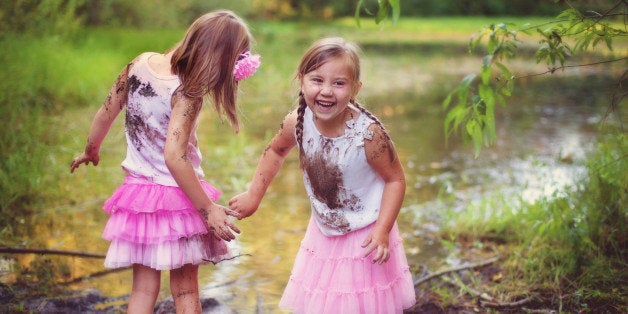
"To me, a lush carpet of pine needles or spongy grass is more welcome than the most luxurious Persian rug."
--Helen Keller
As a child, I loved the natural world. Maybe it had something to do with growing up in a small town in upstate New York where the distractions of big-city lights were absent. Maybe it was because nature had so many secrets and I was thrilled to be a detective, uncovering them one by one. My neighbor Betsy and I built a tree fort and created rooms walled by foliage. We collected wildflowers instead of Barbie dolls. We put band-aids on earthworms inadvertently chopped by our dads' lawnmowers. We diligently rescued and cared for baby birds that had fallen from their nests. We called our fort "Hullabaloo," alluding to the action-packed activities of our backyard world.
I'm sure that when people from my generation think back to their childhoods, many recall a tree house, a Boy Scouts or Girl Scouts camping trip, family picnics, or a passion for fishing, hunting, or horseback riding. Most of us had an occasional appetite for dirt -- maybe even ingested a few delicious bugs here and there -- as we explored backyards and nearby vacant lots. As someone who grew up in such a world, I enthusiastically encourage parents to bring back that halcyon childhood pastime of letting kids get muddy once in a while.
I have more than my own experience to show as evidence that this is a good thing: Study after study indicates that children grow up healthier and happier when they experience a direct connection to nature. Just as importantly, those young people are also far more likely to value the natural world when they've developed a connection to it. The need for this has never been greater than it is today.
Our natural world is extraordinary in its diversity and complexity, but it's also under tremendous threat. In the past decade, countless tropical rainforests and coral reefs, as well as marshes and prairies closer to home, have been lost forever due to human activities, and many more are critically endangered. These areas don't just house animals and plants found nowhere else on the planet; they also provide important economic services that benefit human health. Streams cleanse fresh water; forests reduce erosion and flooding; tree canopies provide medicines; mangroves protect against storm surge; and insects pollinate crops. The natural world represents an economic backbone for the future of local communities by bolstering tourism, real estate, and local people's livelihoods.
The problem is that at a time when our precious natural world faces unprecedented threats, we're also in the midst of a crisis in science education. Federal funding for scientific research has been slashed relative to inflation. Nationwide, the science literacy of our citizens has eroded, resulting in a loss of talent that once gave our technology an edge. This has far-reaching implications and represents perhaps the most critical global challenge we face today -- one that America, and the world, cannot afford to lose.
So where to begin? Some of the solutions, I feel, can be found at home, in the way we raise our kids. As far back as 2002, there was already evidence of an expanding divide between "virtual" and "real" nature, especially in the minds of children. A survey reported in the journal Science, for example, found that more children recognized the creatures in the electronic game Pokémon than could identify real creatures such as otters or beetles. Today, kids know more about the complexities of Xbox and Android platforms than the food webs we rely on for our meals. If our children are lucky enough to learn about forests and shorelines at all, it's generally via two-dimensional computer screens instead of wading through tidepools or gazing into the treetops.
Damages to Earth's living systems are fast approaching irreversible "tipping points," and although we now have a wealth of technological tools at our disposal -- both to understand the threats and to assist with solutions -- there's still no substitute for a connection to the real world when it comes to understanding the complexity of natural systems. This is where science literacy truly begins.
Forging a connection between child and nature is one of the best and simplest ways to inspire young people to make good decisions about personal health, climate change, and sustainable use of natural resources. They need to know what affects the chemistry of the ocean, why tropical rain forests are critical to life in the temperate regions, how millions of years are required to create petroleum from dead plants, and why mercury builds up in fish. (It's also useful to be able to identify poison ivy!) This understanding becomes realest and most meaningful when a person is connected to the natural world.
Although my love of nature was spawned by early childhood explorations, it truly blossomed when I became a parent. Being a mom made me think more deeply about my children's environment. Clean air, pure drinking water, seeing a beach at sunset, and hearing bird songs in the early morning are some of our greatest treasures, and perhaps our children's most valuable inheritance. I believe that science literacy is one of the most important tools to assure quality of life in the future, and I hope this blog series will provide enough interesting detail and fascinating scientific facts to inspire anyone who reads it to love nature just a little bit more -- and to get out there and enjoy it.
For Earth Day (April 22), why not pledge to share the natural world with a young person -- your children, grandchildren, or a kid down the street -- for the rest of the year? Help bridge the divide for the next generation between virtual and real nature, and show them just how much fun getting muddy can be.
